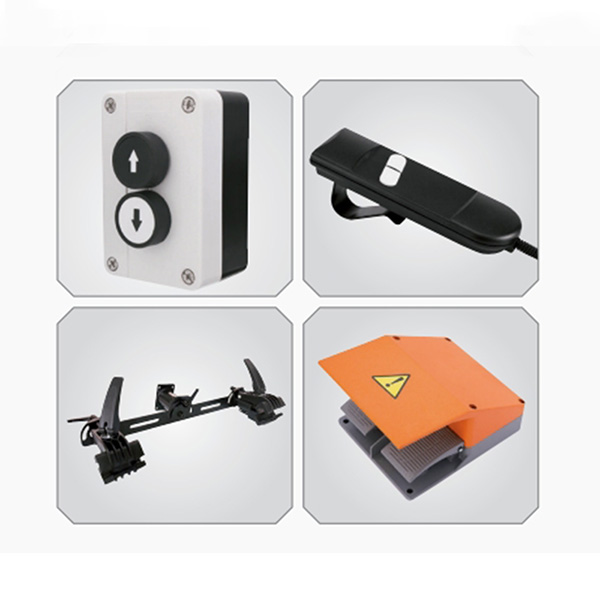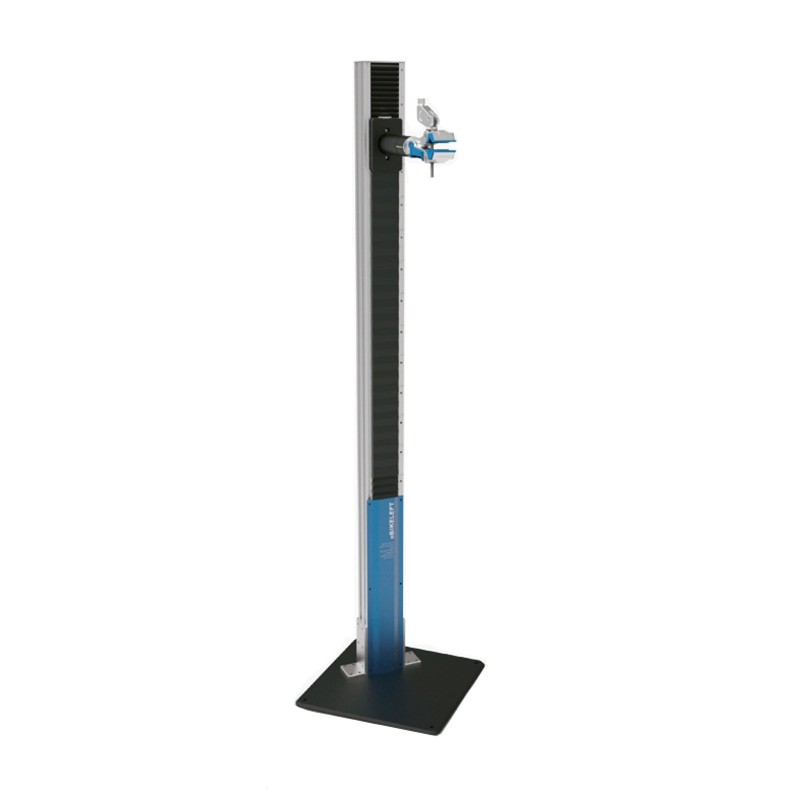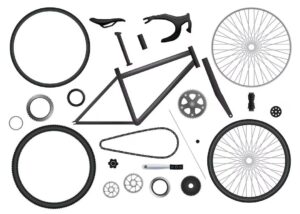Quer saber como levantar uma bicicleta pesada de forma eficaz e segura? Levantar uma bicicleta pesada pode ser um desafio sem as técnicas e ferramentas certas. Esteja você se preparando para manutenção, armazenar, ou transporte, dominar métodos de levantamento adequados é essencial.

Quando você deve levantar uma bicicleta?
Wondering about the scenarios that might require you to lift your bike? Aqui estão algumas situações comuns em que é necessário levantar sua bicicleta:
- Carregando em um bicicletário: Quando você precisar transportar sua bicicleta em um veículo com bicicletário, levantá-lo no rack é essencial. Isso normalmente requer levantar a bicicleta até a altura do peito ou mais, dependendo da posição do rack.
- Reparação de pneus furados: Esteja você na estrada ou em casa, consertar um pneu furado geralmente exige levantar a bicicleta para remover a roda. Isso permite que você acesse e substitua a câmara de ar ou pneu sem que a bicicleta esteja apoiada no chão.
- Manutenção de rotina: Execução de tarefas de manutenção de rotina, como limpeza, lubrificando a corrente, ajustando freios, ou verificar o sistema de transmissão geralmente requer levantar a bicicleta em um suporte de trabalho. Esta elevação facilita o acesso a diferentes partes da bicicleta para uma manutenção completa.
- Armazenar ou estacionar: Armazenar sua bicicleta verticalmente para economizar espaço ou estacioná-la em um suporte para bicicletas designado geralmente requer levantá-la até a posição. Isso garante que a bicicleta esteja segura e fora do caminho quando não estiver em uso.
- Superando Obstáculos: Em ambientes urbanos ou off-road, você pode encontrar obstáculos como meio-fio, escadaria, ou terrenos acidentados que exigem levantar a bicicleta para navegar com segurança. Isso é especialmente comum em cenários de deslocamento urbano ou mountain bike.
- Transportando para cima: Se você mora em apartamento ou precisa guardar sua bicicleta em um nível superior, lifting it upstairs or onto an elevator may be necessary.
- Substituição de componentes: Atualizar ou substituir componentes da bicicleta, como pedais, sela, ou guidão geralmente envolve levantar a bicicleta para remover e instalar essas peças corretamente.
Métodos para levantar uma bicicleta pesada
Quando se trata de levantar uma bicicleta pesada, existem basicamente dois métodos que você pode empregar: técnicas de elevação manual e uso de rampas e suportes. Cada método tem suas vantagens dependendo da situação em que você se encontra.
- Técnicas de levantamento manual: Envolve usar sua própria força e mecânica corporal para levantar a bicicleta. Este método é versátil e pode ser usado em quase qualquer lugar, tornando-o um conhecimento essencial para todos os ciclistas que possam ficar sem equipamento especializado.
- Usando rampas e suportes: Eles fornecem assistência mecânica para levantar bicicletas, modelos particularmente mais pesados, como bicicletas elétricas (bicicletas elétricas). Essas ferramentas tornam o levantamento mais fácil e seguro, reduzindo o risco de ferimentos ou danos à bicicleta.
What Should You Do Before Lifting a Heavy Bike?
Antes de tentar levantar uma bicicleta pesada, é crucial tomar algumas medidas preparatórias para garantir a sua segurança e a proteção da sua bicicleta. Isto inclui seguir as precauções de segurança, reunindo o equipamento necessário, e em alguns casos, escolhendo o elevador elétrico certo para e-bike para um manuseio mais fácil.
Precauções de segurança
A segurança deve estar sempre em primeiro lugar ao levantar uma bicicleta pesada. Isso envolve usar roupas e calçados apropriados, limpando seu espaço de trabalho de obstáculos, e garantindo que você tenha espaço adequado para manobrar.
Necessary Equipment
Ter as ferramentas certas pode facilitar significativamente o processo de elevação. O equipamento essencial inclui luvas para aderência, suportes ou rampas específicas para bicicletas, and potentially an e-bike electric lift for enhanced convenience.
Para proprietários de bicicletas elétricas mais pesadas, investindo em um elevador elétrico para bicicletas elétricas como BRILHE LOGO TP-930074 pode ser uma virada de jogo. Esses elevadores são projetados para lidar com o peso e as dimensões das bicicletas com segurança e eficiência, reduzindo o esforço do usuário e minimizando o risco de acidentes.


Como levantar uma bicicleta pesada com suporte: Guia passo a passo
Levantar uma bicicleta pesada usando um suporte pode simplificar bastante o processo, proporcionando estabilidade e controle. Aqui está um detalhado, guia passo a passo para garantir que você levante sua bicicleta com segurança e eficiência:
Avalie o peso e o equilíbrio
Comece avaliando o peso e o equilíbrio da bicicleta. Verifique a distribuição de peso para entender o centro de gravidade da bicicleta. Para bicicletas elétricas, o peso da bateria pode afetar significativamente o equilíbrio, então considere esse fator. Esta avaliação ajuda a determinar a técnica de elevação correta e garante que você manuseie a bicicleta sem causar esforço ou tombamento.
Posicione-se corretamente
Fique em pé com os pés afastados na largura dos ombros para obter uma base estável. Posicione-se de frente para a bicicleta, garantindo que você tenha uma linha de visão clara para todos os componentes. Dobre ligeiramente os joelhos e mantenha as costas retas para manter uma postura natural., postura ergonômica. Esta postura aumentará seu poder de levantamento e reduzirá o risco de lesões.
Utilize o elevador elétrico Ebike
Um elevador elétrico para bicicletas elétricas é uma ferramenta inestimável para levantar bicicletas pesadas. Veja como configurá-lo:
- Configure o elevador: Coloque o elevador em uma superfície plana, superfície estável. Ajuste a altura do elevador para alinhar com o quadro da bicicleta. Certifique-se de que todos os mecanismos de travamento estejam seguros e que a base do elevador esteja estável para evitar tombamento.
- Proteja a bicicleta: Posicione a bicicleta na plataforma do elevador, garantindo que esteja centrado e equilibrado. Use tiras ou grampos, se disponível, para prender a bicicleta firmemente ao elevador. Isto evita qualquer movimento ou escorregamento durante o processo de elevação.
- Levante a bicicleta: Ative o mecanismo de elevação de acordo com as instruções do fabricante. Levante lentamente o elevador, mantendo um ritmo constante para evitar movimentos bruscos. Segure firmemente o guidão ou quadro da bicicleta para guiá-la suavemente enquanto ela sobe.
Conclusão
A maneira correta de levantar uma bicicleta pesada é crucial para qualquer ciclista. Quer você esteja usando técnicas manuais ou equipamentos especializados, como rampas e arquibancadas, saber levantar uma bicicleta pesada garante segurança e facilidade. Seguindo as etapas descritas neste guia, você estará equipado para levantar sua bicicleta com confiança e eficiência. Sempre priorize a segurança, use equipamento adequado, e aproveite a conveniência de uma bicicleta bem conservada e manobrável.

















